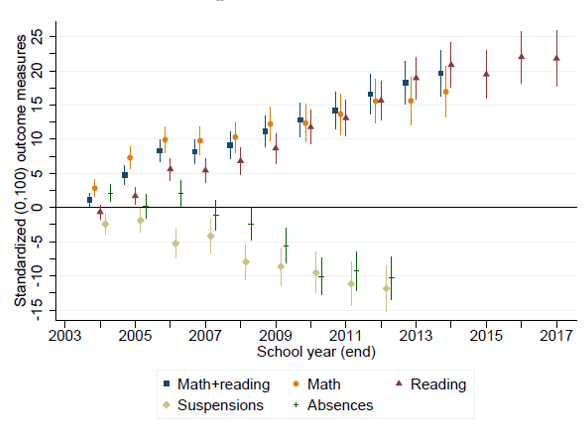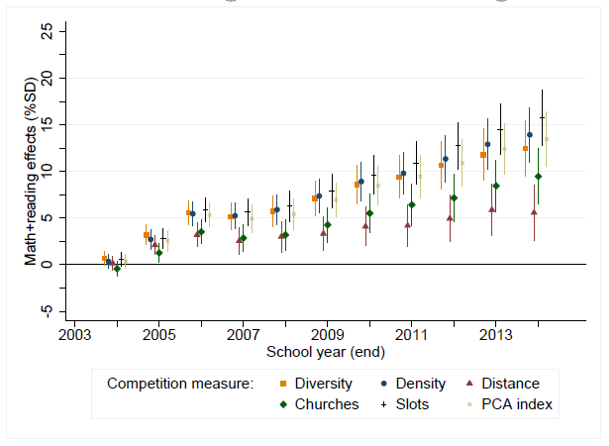
As the nation’s largest tax credit scholarship program has expanded, students attending public schools most likely to be affected by the competition of private schools are experiencing higher test scores, reduced absenteeism and lower suspension rates, according to a new report from the National Bureau of Economic Research.
The findings of David Figlio, Cassandra M.D. Hart and Kryzstof Karbownik are contrary to what scholarship opponents like the Florida Education Association, which sued to stop the Florida Tax Credit Scholarship program in 2014, have claimed.
The report, “Effects of Scaling Up Private School Choice Programs on Public School Students,” is the latest in a series of studies demonstrating positive impacts of the tax credit scholarship program. And in this case, those positive impacts go beyond the students who benefit directly from the scholarships.
The Urban Institute found last year that students participating in the scholarship program were more likely to attend and graduate from college than eligible peers remaining in public schools, while annual evaluations from the Florida Learning Systems Institute repeatedly have revealed that Florida’s most disadvantaged students have the same annual learning gains as all students of all income levels nationally.
Figlio and company found the positive impacts of the program, which is providing more than $600 million in scholarships this year to help more than 109,000 economically disadvantaged students, were largest for schools facing the most competitive pressure from scholarship-eligible private schools and for lower-income students as well as black and Latino students.

The researchers previously had studied the scholarship’s impact on public school students and found positive results, but the program has grown significantly since then, encompassing 4 percent of Florida’s K-12 student population. Their new study was focused on determining the effects of the expansion.
Measuring the impact against six categories of competition – density, distance, diversity, slots, churches and a combined measure they call the “competitive pressure index” – they found positive impacts across all of them for reading scores, combined math and reading scores, absenteeism and suspension rates. (See charts below.)
Using standard deviation to measure the impact, they were able to determine that suspensions and absences would be reduced by 0.6 to 0.9 percent of a standard deviation for every 10 percent increase in program size. To put this in perspective, the researchers pointed out that the black and white achievement gap itself is 62 percent of a standard deviation.
The upshot: The researchers’ results were consistent with their past findings, which showed modest benefits at the time the voucher program was introduced and indicated further growth of those positive effects as the program has scaled up.




[…] Matus, writing in RefinEd, notes that a rigorous study published by the National Bureau of Economic Research found that as America’s largest […]
[…] year, by contrast, a rigorous new study from nationally respected researchers finds that instead of hurting public schools, Florida private […]